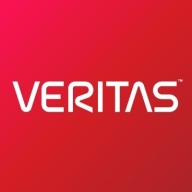

NetApp Cloud Backup and Veritas Alta Data Protection compete in data protection. NetApp Cloud Backup holds an advantage with flexible pricing and efficient customer support.
Features: NetApp Cloud Backup provides seamless cloud integration, automated backup scheduling, and advanced data security. Veritas Alta Data Protection offers cross-platform support, robust disaster recovery, and comprehensive protection features.
Ease of Deployment and Customer Service: NetApp Cloud Backup is known for intuitive deployment and accessible customer service. Veritas Alta Data Protection has a detailed deployment framework, supported by specialized customer service for technical guidance.
Pricing and ROI: NetApp Cloud Backup offers a pay-as-you-go model, delivering high ROI for budget-conscious operations. Veritas Alta Data Protection requires a higher initial investment, offering long-term ROI through its comprehensive protection measures.


NetApp Cloud Backup is a fully integrated service for cloud backup and restoration. It was created to comply fully with NetApp's native data management software ONTAP, used for hybrid cloud experience. NetApp Cloud Backup is used to create backup and restoration for the protection and archiving of data, databases, and virtual machines related to the Cloud and On-Premises data in ONTAP. The way NetApp Cloud Backup works is by automatically creating block-level incremental backups. This ensures that the created backups are very fast and easy to restore. It is suitable for data protection regarding on-premises software as well as in the public cloud. NetApp Cloud Backup provides users with the ability to protect their cloud data at affordable prices and with a user-friendly interface so they don't need a lot of technical knowledge to be able to secure their cloud storage.
The copies created by NetApp Cloud Backup can be stored in the user's personal object storage in the cloud as well as on premises with StorageGRID - NetApp's storage platform. The backup copies can be restored to the original source or to a different source in Cloud Volumes ONTAP. NetApp Cloud Backup provides backups to AWS, Azure, and Google Cloud.
The features NetApp Cloud Backup provides include:
In addition to enhanced security and protection from malicious attacks, the advantages of using NetApp Cloud Backup include:
Abbasi P., a User at a financial services firm, likes that NetApp Cloud Backup is a completely agentless solution.
A Service Manager at a tech services company values its stability, scalability, and good technical support.
Veritas Alta Data Protection offers comprehensive data backup and recovery solutions tailored for enterprises, ensuring data safety and compliance.
Designed for seamless integration into complex IT environments, Veritas Alta Data Protection leverages advanced technology to provide reliable data protection, scalability, and ease of management. It caters to diverse sectors, supporting cloud-native and hybrid architectures while ensuring streamlined disaster recovery. Users find it valuable in optimizing backup processes, securing sensitive information, and maintaining high data integrity.
What are the key features of Veritas Alta Data Protection?In industries like finance and healthcare, Veritas Alta Data Protection is implemented to address critical data protection needs. It supports the secure handling of sensitive customer information and adheres to stringent compliance mandates, ensuring continuous protection and availability of essential data resources.
We monitor all Cloud Backup reviews to prevent fraudulent reviews and keep review quality high. We do not post reviews by company employees or direct competitors. We validate each review for authenticity via cross-reference with LinkedIn, and personal follow-up with the reviewer when necessary.